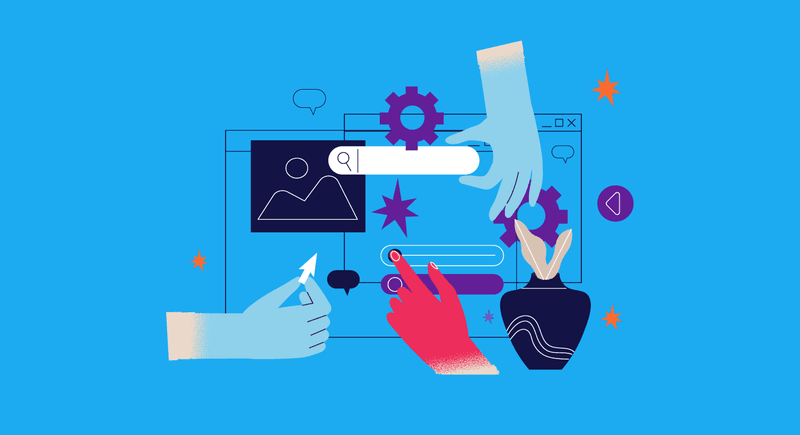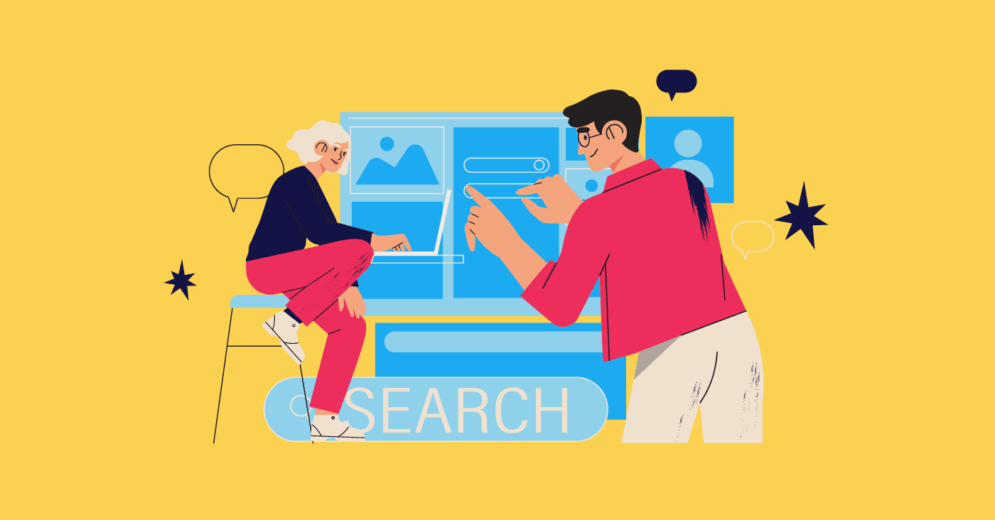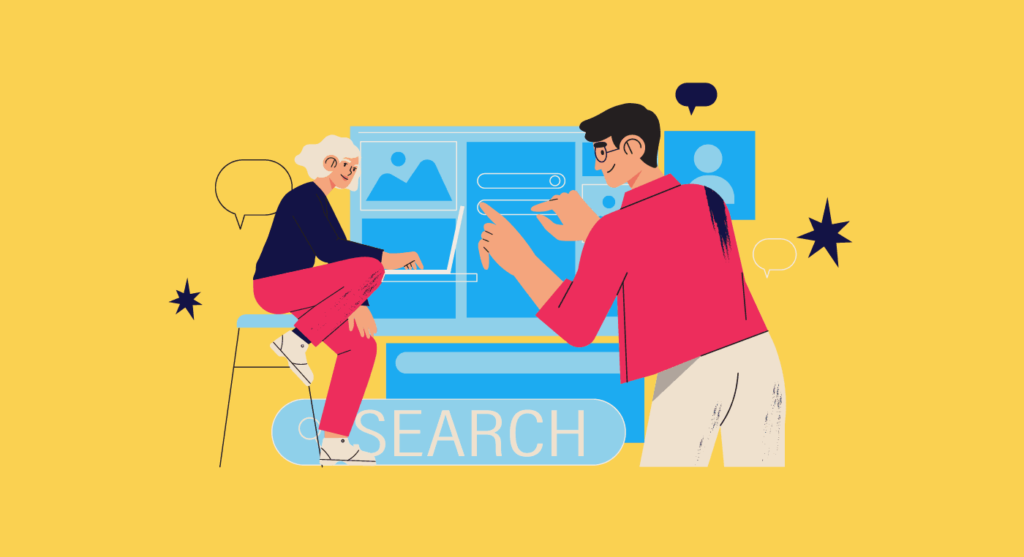As time passes, an ever-growing amount of information becomes available to us, leading to the emergence of new job roles.
Design is a field that has experienced significant growth in recent years, with numerous specializations emerging, including UX Design and Product Design.
UX Design aims to meet the needs of product or service users and focuses on creating value. However, how does Product Design fit into this picture?
Product Design places a strong emphasis on user experience and employs techniques similar to those used in UX Design. Nonetheless, these two concepts are distinct from each other, and we will explore the differences between them.
This article will help clarify the distinctions between these two areas and how they can be applied in a business context.
Exponential Growth
One industry that has experienced significant growth in recent years is design, with various specializations, including UX Design and Product Design.
UX Design has grown significantly, primarily because companies have come to recognize the importance of its processes and tools. This digital field has created many opportunities and is becoming more and more popular in large organizations.
A Nielsen Norman Group (NN/g) study predicts that UX Design will keep growing, with an estimated 100 million people working in the field by 2050. This means there’s still plenty of room for more growth!

In his video ‘How Much UX Do You Need?’, Jakob Nielsen states that the average percentage of project budgets allocated to UX was 11% among the companies they studied. This figure represents the average across companies that implement UX practices.
It is worth noting that 11%, according to the video, is an average. Some companies may provide higher budgets, and some may provide lower ones.
The point is: this number tends to increase. As time goes by, more people will be switching to UX Design, finding good opportunities and great salaries.
To think and implement UX Design is to stay ahead of the competition. Companies are starting to see this and are looking for qualified professionals who can solve their problems and understand the needs of the users.
Reading Tip: UX Design In High Demand
What do UX Designers do?

We know that UX covers many topics, and the focus of this field is to concentrate on people’s satisfaction and experience, making sure that your products solve problems and are successful.
This process includes good research, development, testing, and validation.
The focus of this area is constant guidance on product and service quality, using techniques such as Design Thinking, Double Diamond, and Lean UX, for example.
We can say that the search for the best experience is the goal in all stages for those who work in this field.
In this sense, working with UX Design is not simple, as many people think, it is not simply developing beautiful application screens. There are technical skills and a lot of study involved.
Every UX Designer needs to identify the problems in apps, products, and services. It is the designer’s role to understand the situations and find the best ways to solve these problems.
In this sense, some of their duties are:
- Perform market testing and research;
- Creating prototypes for new applications;
- Provide feedback after testing the products created;
- Being communicative and constantly proposing ideas on how to improve your services.
All these points help to improve the user experience of a given interface.
Thus, UX Designers must pay attention to the product flows and processes, identify the reasons for possible dissatisfactions, and also apply their knowledge to improve people’s experience.
Reading Tip: Product Discovery: Identifying Problems And Defining Solutions
How can I become a UX Designer?

It is important to point out that switching careers is not an easy task; it involves planning, courage, and determination. But if you have already made this decision, know that your life can change.
To be a UX Designer, you don’t need to have specific experience in the area. In fact, having experience in other areas is even an advantage for those who want to switch to UX Design.
For example, if you have worked in administration, customer service, and sales, you can benefit from the skills that these areas demand.
Several people who study with Aela come from fields completely different from Design. From law to biology.
So don’t get stuck on the idea that you need a background in design to work in UX, because this is not true.
You don’t need to be born a UX designer to become one
We understand that it is not necessary to have a background in design to work in UX. But this does not mean that changing fields is a simple task. There are many challenges along the way and it is important to be prepared.
Since this area is still growing, it is only natural that we do not know where to start.
In this sense, the first step is to research the field, watch videos that discuss it, and seek out individuals who are already working in this role. It is often easier to learn when someone can demonstrate the practical application of what you want to do.
There are thousands of people around the world who at some point in their lives have asked the same questions that you are asking now. These people also came from different fields, but they decided to take a risk and today they are happy with their current position.
Here at Aela, we have several interviews with students who have made these career transitions, and this can help you understand how this process works.
What is Product Design?

To answer this question we need to go back in time. In the past, a product was seen as a material good, so we related it to electronics, appliances, building materials, and other physical products.
This was common at the time; they were associated directly with retailers and stores. After the technological revolution, products started to be related to digital goods, apps, and systems.
But can we say that Product Design is a field?
Yes! In fact, it is becoming more and more consolidated in the market due to the growing demand for digital products and services.
Just look around and you’ll find companies that sell products exclusively online, without a physical store. This is due to the changing times, and a retail market without an online marketplace to expand one’s business is now unimaginable.
This is where Product Design comes in. One of its goals is to identify a market problem and develop a product that is the solution.
What do Product Designers do?
Product Designers need to be aware of the trends of the moment. They must have a strategic look at what they are going to create.
In this sense, what will determine the success of a product is its functionalities. A well-structured layout that meets expectations, a feature that saves time, another one that improves people’s experience. Everything is of great value.
In general, the creation of a product will be determined by people’s opinions. If the strategy meets what they expect, success is guaranteed, but if the first impression fails to please, it can be a flop.
Therefore, a good product strategy involves:
- Empathy: we need to understand how people think so we can improve their experience;
- Definition: creating an idea based on the user’s needs;
- Idealization: propose creative solutions, ideas that help present the product;
- Prototyping: create early versions of the product in order to evaluate its efficiency and experience;
- Implementation: implement improvements and updates to the prototype created earlier and put it into its official version;
- Testing: delivering the official product to your users for feedback.
Reading Tip: From Traditional Design to Product Designer – Interview With Rodrigo Medeiros
How can I work with Product Design?

The Product Designer needs to identify the users’ problems, understand their needs, and seek the best solutions for each situation. For this, the techniques of Design Thinking help to identify these points.
This method helps to understand people’s needs, promotes innovation and integration of teams, and solves problems that remain unanswered. Good Designers need to apply design thinking throughout the entire product development process.
They must follow from the beginning to the end of the creation, in a tangible way, outlining the goals that must be achieved in a given period. Some steps contemplate this flow, which are:
- Define the product vision;
- Conduct product research;
- User Analysis
Define the product vision
Defining the product vision consists of understanding in which context the product best fits. To do this, it is necessary to define the market vision and outline a clear strategy, and then start the creation.
Don’t be fooled into thinking that it is something simple. Defining a business vision is the most difficult and also the most important task for a design team. Let’s suppose a product is launched, but there is no clear goal behind its development and no broad vision of what it needs to achieve.
What is the chance of success? Very little! This is why defining a direction for the product is the first and most important task for a Designer. By identifying the vision of the business, we can find the audience we need to reach.
After this, it is necessary to elaborate a strategy according to the defined vision, because the two things will complement each other. With the strategy, we will define the best path to follow.
Reading Tip: UX Research: A Key Role In Product Design
Conducting product research
After defining the vision and strategy, the product research comes in to complement the goal you want to achieve. A good research consists in paying attention to details, searching for as much information as possible, and understanding what the current trends are.
Before any decision is made, we need to pay attention to detail. In this case, conducting interviews with the users helps a lot to understand what they really think.
Designers must conduct intense research, collect the necessary information, and from this, come up with ideas to be implemented.
This process is not simple and it never ends. Research must always be done to collect new impressions from people about a product.
Ben Sheppard, partner, and design leader at McKinsey, talks about the role of the Designer within companies:
One of the key findings of our study was that for design to be at its best, design teams must work cross-functionally in the organization, not in isolation as many organizations do.
With all employees working together, the pursuit of excellence will increase, you know that saying? Two heads are better than one?
User Analysis
Now that the research has been done, it is necessary to gather all the information collected and understand how it can be extracted in the best way. At this point, the data is organized and adjusted to arrive at the product that people need.
This information will help designers to understand which path they should follow to start developing the product. One tool that can be used is the empathy map.
Differences between UX Design and Product Design

After explaining these fields in detail, we are left with the question: is there a difference? The answer is yes, but they are not so different from each other. The two fields are similar, but Product Design includes more functions than UX Design.
UX Designers focus more on the usability of the product, on how it works, and on the experience of the users during their journey.
Product Designers, on the other hand, will focus on the business processes of the product. They want to ensure that the product achieves the goals that have been aligned.
UX Design focuses on making sure that your apps are optimized for people’s needs and provide them with a positive user experience. While aesthetics are a part of a product’s success, what counts most is the usability of the product and whether it effectively solves the problems that users are facing.
Product Design focuses on the functional requirements of the product that was built, that is, designers will focus on the product’s ability to deliver on its intended functions and features, and ensure its maintenance in case any function fails or “breaks down” over time.
Imagine that you have found an organization’s website on the Internet. How can we classify what UX Design is and what Product Design is?
UX Design aims at the needs and goals of users. It is their job to verify if these needs are being met in the best way within the interface.
UX is every graphic element that is present at the beginning of the website, including colors, textures, shapes, graphics, and images. Product Design is also this, but it is concerned with the business goals.
What does the organization want to achieve in a certain period? How will the customer feel using this product one year from now? What methods can we use to make our service or product more accessible?
Similarities between UX Design and Product Design
Although the two positions have different goals, there are other characteristics that are similar, which are:
- Teamwork: working together will always be the best option for any team that wants to achieve its goals. Collaboration, communication and leadership must exist at the right moments;
- Design flow: the design process aims to improve the user experience, so all flows built to meet people’s needs will be similar;
- User testing: conducting market research, interviewing users, and designing the product so that it is easy to use, is the goal of both positions.
Reading Tip: Why Are Balanced Teams So Important To UX?
UX Design or Product Design: Which one is more important for the business?
We cannot say which area is more important, because both will complement each other. This will depend on the focus you will give to your business, but in general Product Design needs UX Design, and vice versa.
The positions are similar, but in practice they will perform different activities, because UX Designers will explore all the possibilities that that product can bring to the user, while Product Designers will intensify their services in the acceptance of that product on the market and in its own evolution and maintenance over time.
It is not possible to determine which area is better, but it is clear that both areas are fundamental to create good products and provide good experiences for the users, while also taking into account the business objectives and results.








